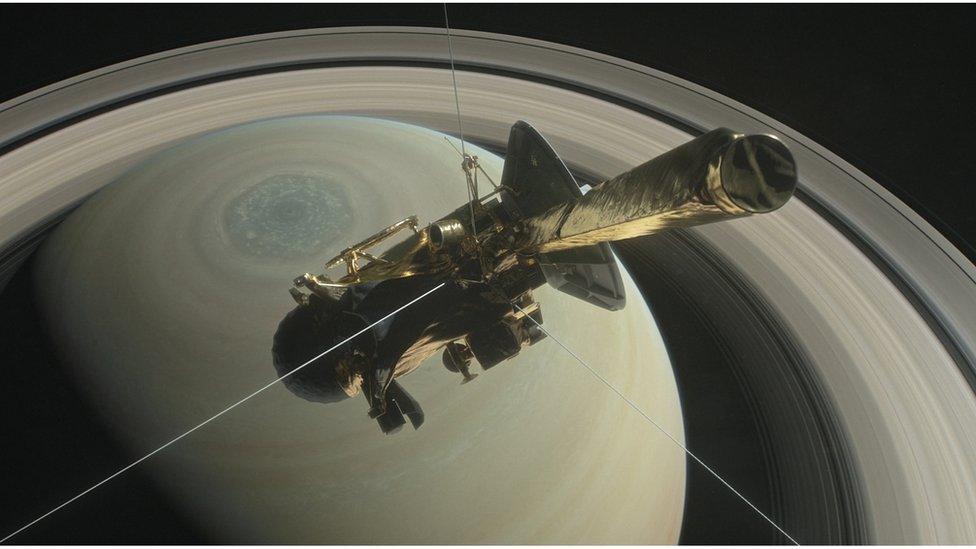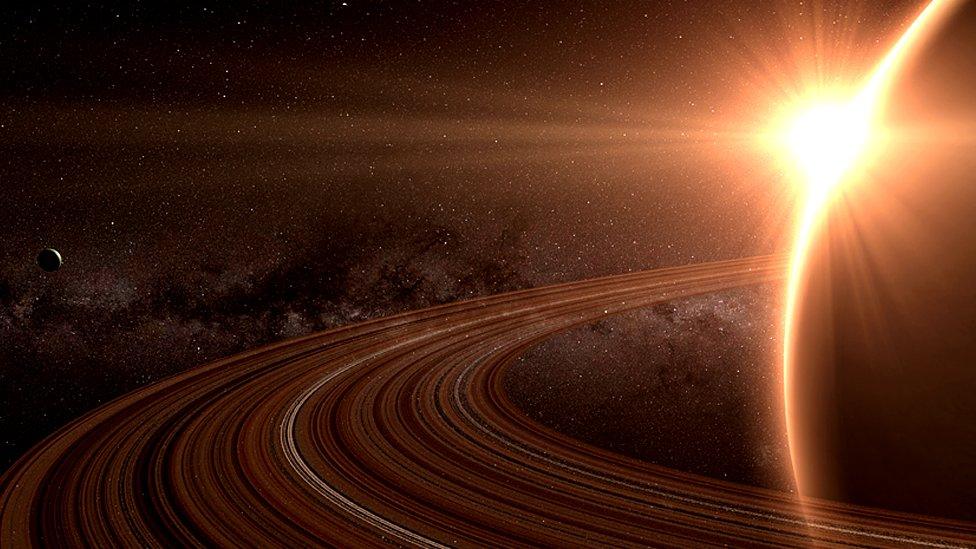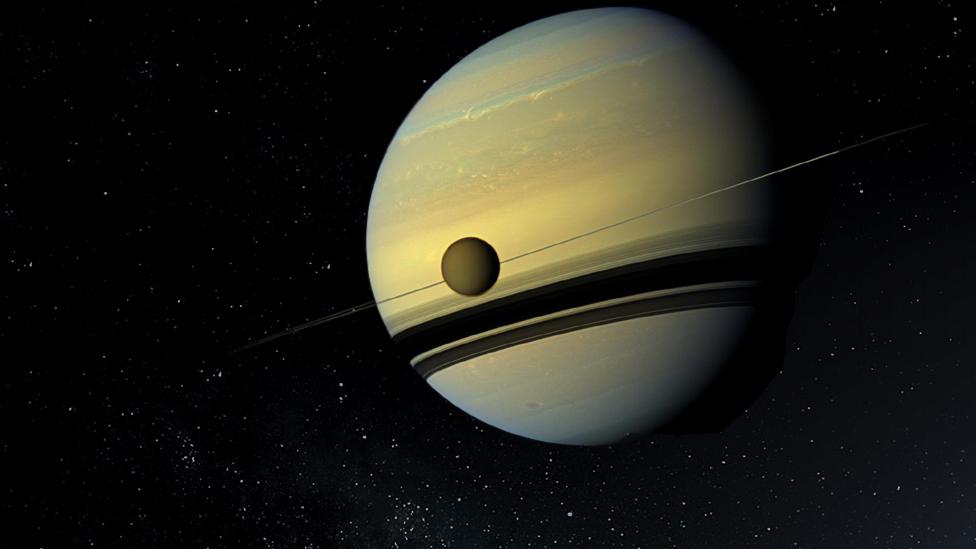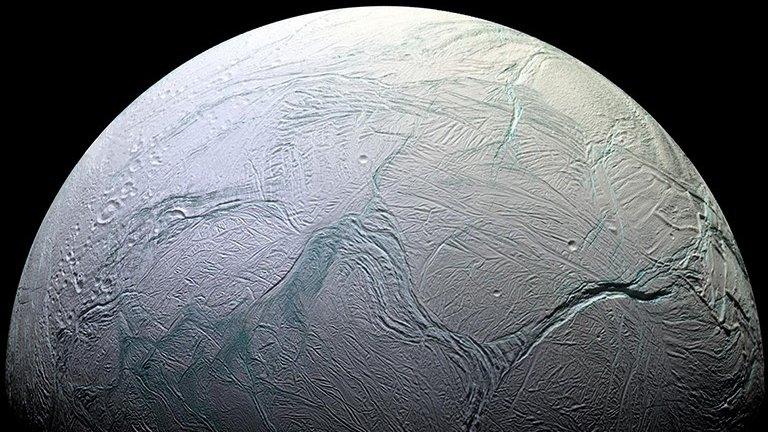Aberystwyth Uni experts follow Cassini Saturn mission
- Published

Space scientists from Aberystwyth University will monitor the final stages of a mission to Saturn.
The Cassini craft, named after astronomer Giovanni Domenico Cassini who discovered Saturn's rings, was launched in 1997.
It took seven years to reach the planet and landed on one of its moons, Titan.
An Aberystwyth University professor is co-investigator on three instruments on Cassini, which aims to determine the structure and behaviour of the rings.
In April 2017, Cassini embarked on a final programme of 22 orbits of Saturn, each taking about six and half days to complete.
Travelling at up to 78,000 mph, the probe flew through a previously unexplored region to try and solve the mysteries of the mass of Saturn's rings and determine the length of its day.
Its final stages are being monitored on Friday.
Manuel Grande, head of Solar Systems Physics at Aberystwyth, contributed to building Cassini's plasma spectrometer and its cosmic dust analyser.
He said: "One of the most startling discoveries of Cassini has been that [Saturn's moon] Enceladus has a liquid water ocean under its ice surface, and that this ocean contains salts and organic molecules.

"So we actually know a great deal about what the inside of Enceladus is made of because we are able to analyse the dust probes.
"It is an instrument that has come into its own in the last couple of years which, for a mission this long, is just amazing."
Prof Grande added the data gathered had changed scientists' understanding of the universe.
"It turns out that Titan has got big lakes, sand dunes and rivers which, from space, look pretty much like rivers on Earth. It's also got seasons.
"In many ways it's the place in the solar system that if you just look at it, looks most like the Earth.
"The difference is that it is much, much colder, and the liquid is liquid methane similar to that in camping gas cylinders, and the rocks are ice.
"That is completely surprising because, before we went to Titan, we had never seen under the atmosphere.
"So it tells us there is great argument for going to new places, and when we do, we find out new and unexpected things."
- Published14 September 2017

- Published13 April 2017
